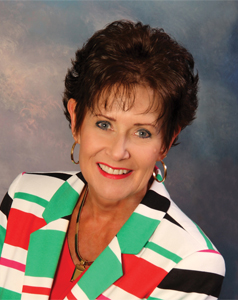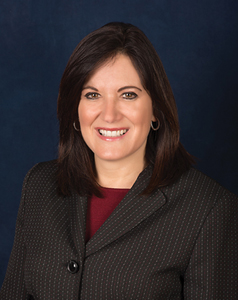
FCAP Community
Published November 2018
Florida Community Association Professionals’ (FCAP) training is offered on two levels. Level one consists of courses meeting Florida’s continuing education requirements for CAMs, and level two is the Florida Advanced CAM Studies (FACS) course. For further information about the more than 50 online continuing education classes available or to pursue the Certified Florida Community Association Manager (CFCAM) designation, please visit www.fcapgroup.com/membership/education-training/.
Because You Asked
By Betsy Barbieux, CAM, CFCAM
Betsy,
I’m taking you up again on your offer to field questions anytime. This is Jon from the board member class of February 2018 in St. Augustine Beach. Would you point me to the regulations around increases in annual assessments? I’ve not been able to find such information in Chapter 720, but searching through it is a challenge in and of itself. Maybe the regulations are in another chapter? Our CAM has told us annual assessments cannot be raised more than 10 percent a year by board action. It requires a vote of the members. I don’t recall that from our class, and all I’ve seen in the statutes related to special assessments, but l could have missed it in Chapter 720. Plus, there are the couple of other statutes that apply to HOAs. Could you help?
– Jon
Jon,
I am not aware of any HOA statutes addressing assessment increases. There are procedures in condominium/cooperative law allowing the membership to substitute its budget for a board’s budget that increases assessments more than 115 percent, but there is no such statutory language for HOAs. If there is any limitation, it would be in your Declaration (maybe Bylaws), not the statutes.
– Betsy
Betsy,
My association has more than $500,000 in the operating account. They want to lower the dues for 2019 by taking some of that money and fully funding the reserves in advance. Then, on our 2019 budget only we would put in zero on the reserve lines as they will have been funded in advance from the operating account. Is this something we are able to do? If not, would you have any suggestions as to how they could use this money to help lower the dues?
– Sandi
Sandi,
The board has the ability to choose what to do with the surplus. Unless your documents say otherwise, they can apply the surplus to next year’s budget and reduce the assessments, they can apply the overage to reserves, or they can refund it to the owners. They, of course, will not refund it to the owners. You can see that language in your pre-licensing manual on about page 125 or thereabouts…Just double check your documents to see if there is any limitation on what they can do with overage.
– Betsy
Betsy,
I have a condominium association, and the governing documents say white blinds only. Residents have installed tan and claim it was okayed by the previous management company five years ago. There is no documentation to support the owner’s claim. Can the association still enforce the violation? Thank you.
– Brinda
Brinda,
The association probably can’t enforce the violation, but it seems like an attorney question. Just make documentation in the file that a future purchaser needs to know they cannot use any color but white. Check with your attorney.
– Betsy
Betsy,
Can the HOA make rules about window coverings? Can we say, “We do not allow blankets, sheets, or foil on windows?” I’ve seen this in other HOA rules; however, our board claims that it’s illegal, saying, “Federal law prohibits us to make rules inside one’s house.” Can you find the answer? If not, do you know where I can find it?
– Stephanie
Stephanie,
Good to hear from you. Contrary to the advice given to your board member friend, it is not illegal if the Declaration says what is visible in the windows from the road. The answer will be in the Declaration of Covenants. If the board has the right to do so, it will be in that document.
If the Declaration is “silent” and does not address that topic, the membership can amend their Declaration to add the language for owners purchasing in the future. Otherwise, it is not just a board decision; this requires a membership vote to change the Declaration.
Always consider me a resource and never hesitate to ask a question.
– Betsy
CAM to CAM
Marcy L. Kravit, CMCA, AMS, PCAM, CFCAM
AKAM ON-SITE Managing Director
FCAP Education and Training Coordinator
Board of Directors’ Code of Conduct, Role, Responsibilities, and Governance, Part II
Editor’s Note: Part I was published in the October issue of FLCAJ and can be accessed at www.fcapgroup.com/flcaj/flcaj-articles/fcap-community-october-2018/. Part II describes the role of each responsible agent in the community association.
President’s Role
The managing agent utilizes the president as the main point of contact. The president guides the board throughout the decision-making process. He/she sets and establishes the board’s monthly meeting agendas and must ensure that the conduct of business follows the agenda as well as basic principles of Robert’s Rules of Order.
Vice President’s Role
The role of the vice president is to assume the duties and responsibilities of the president in the latter’s absence.
Secretary’s Role
The secretary is responsible for the minutes of the meetings and authenticates association documents, notices, and correspondence when required.
Treasurer’s Role
The treasurer’s responsibility is to ensure that the financial records of the association are properly kept. He/she will review the monthly statements for accuracy but is not liable for validation of the accounting, which is the job of the CPA when engaged to conduct the annual audit. The treasurer’s authority to approve expenditures should be granted and approved by the board and entered into the association’s minutes.
Leadership
Each board member needs to provide leadership, and each officer needs to serve their position. The association acts through its officers and agents. All positions are equally important; however, each position is unique, and each has specific responsibilities. For optimum performance in accomplishing the association’s goals, each board member must work as an individual player on the team, knowing his or her duties, which, in turn, can make the team win and succeed as a whole.
Manager and Management’s Role
The board understands the role of the manager is to supervise, coordinate, and manage all on-site activities without interference. The management is responsible for maintenance schedules, maintenance requests from residents, and supervision of other employees and vendors called to work at the community. He or she will also enforce the association rules as a primary responsibility to ensure the residents’ rights of quiet enjoyment of the property and quality of life are preserved. A report of management’s activities is provided on a regular (typically, weekly, monthly, or quarterly) basis to the board of directors and managing agent.
Board members are not to harass association employees or interfere with management’s ability to conduct business within his/her scope. All board members shall exhibit professional courtesy to all community association management professionals. Such professional courtesy shall include not interfering with the community management professionals, contractors, vendors, suppliers, and employees.
Management Company’s Role
The management company assigns a qualified representative as the association’s liaison to the board, owners, residents, and all vendors and professionals doing business with the association. That person often will attend meetings, provide information, receive instruction, and carry out tasks as assigned by the board. The management company will prepare the monthly financials; assist with human resources, budgeting, collections, and contracts; and support the employees of the association. They will instruct, evaluate, and offer guidance to the manager and other employees of the association.
Other departments within the management company will provide accounting, administrative, and human resources services. Together with this team of people, they will carry out the duties as set forth in the management agreement with the association.
Association Business-Best Interests of the Association
Each director owes every owner the duty to be careful with the association’s assets that are placed in the board’s trust. This duty is a higher duty that calls for the director to place his or her personal benefit second to that of the association. This means that the director ensures that interests of the association come first. It means that the directors carefully examine the association’s assets (capital expenditures) and make plans to ensure their protection. It doesn’t mean hoarding reserves if maintenance is necessary or automatically choosing the “cheapest” contractor. It doesn’t mean neglect of the buildings in order to keep the maintenance fee down to win friends and re-election. It does mean standing up against the pressures of special interest groups in order to protect the association as a whole. It does mean taking the time to carefully consider a variety of approaches to each question brought before the board.
The association is a business, a not-for-profit corporation. The board meetings are to conduct association business that is discussed and voted on by the board of directors at the regular board meetings. Meeting packets are sent to each director prior to the meeting; the members should review the contents and are required to come to the meetings prepared to vote on the agenda issues. No one board member makes any decisions—the board votes, and the majority rules.
Human Resources Management
By Rebecca Furlow and Tracey Clement, Leland Management Company & Betsy Barbieux, Florida CAM Schools
Human resources management is planning, organizing, leading, controlling, and evaluating the human resources and processes of the association so that it can accomplish its goals.
Employees or vendors are obligated to possess the skills needed to perform their tasks, use reasonable care in performing their tasks, refrain from doing anything that would harm the association’s assets and interests, and complete assignments according to performance standards in the time allotted.
The association is obligated to provide employees and vendors full and fair pay for their services, provide a safe work environment, and provide proper training and supervision.
In order to adequately manage the association’s human resources, it should create and maintain a human resources system and provide each employee with an employee handbook. The handbook should include job descriptions and establish performance objectives for each position, as well as evaluation criteria. It should include a progressive disciplinary system as well as dismissal procedures.
The association must comply with applicable federal, state, and local laws and regulations regarding anti-discrimination, compensation, occupational safety and health, recruiting, screening, hiring, and terminating employees.
Employment records and files are to be maintained according to the law.
The preceding is excerpted from the Advanced Florida CAM Studies, the course for the CFCAM (Certified Florida Community Association Management) designation. For more information, please visit www.fcapgroup.com.




